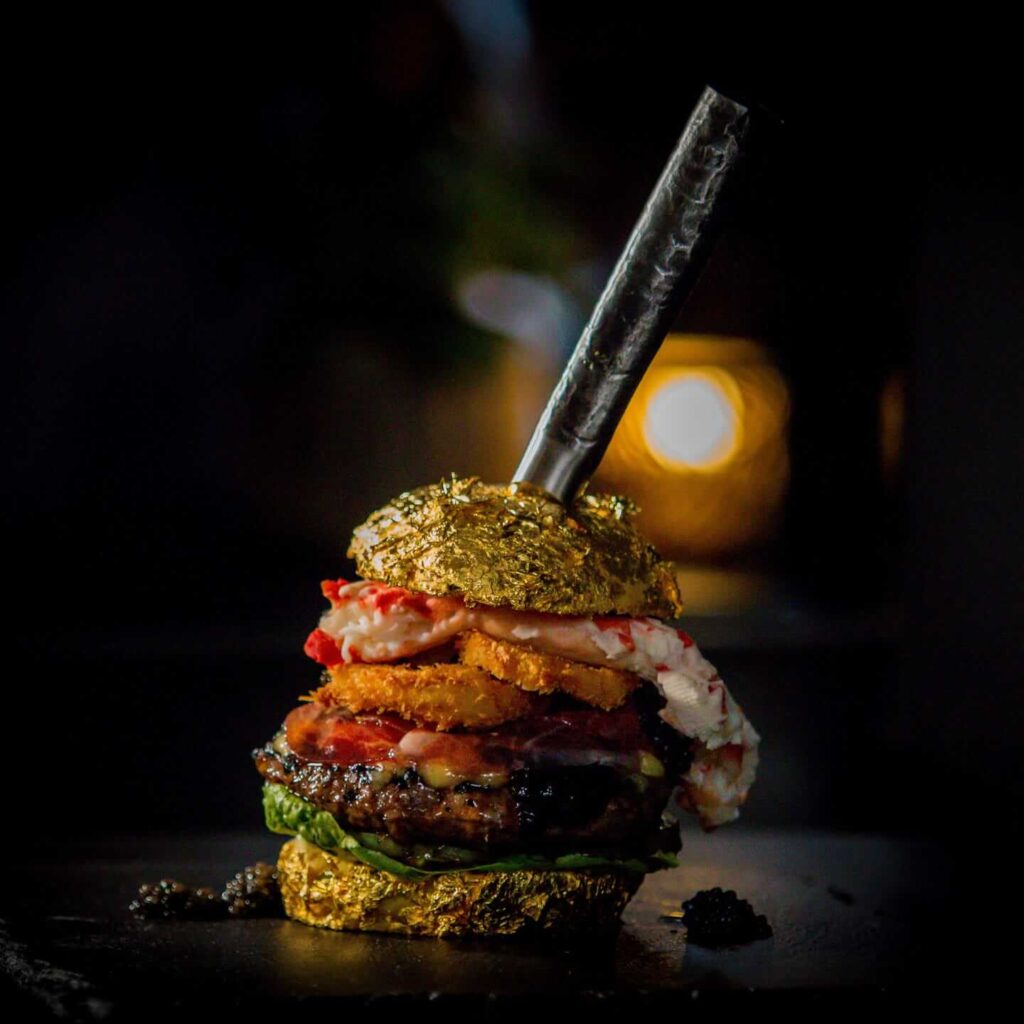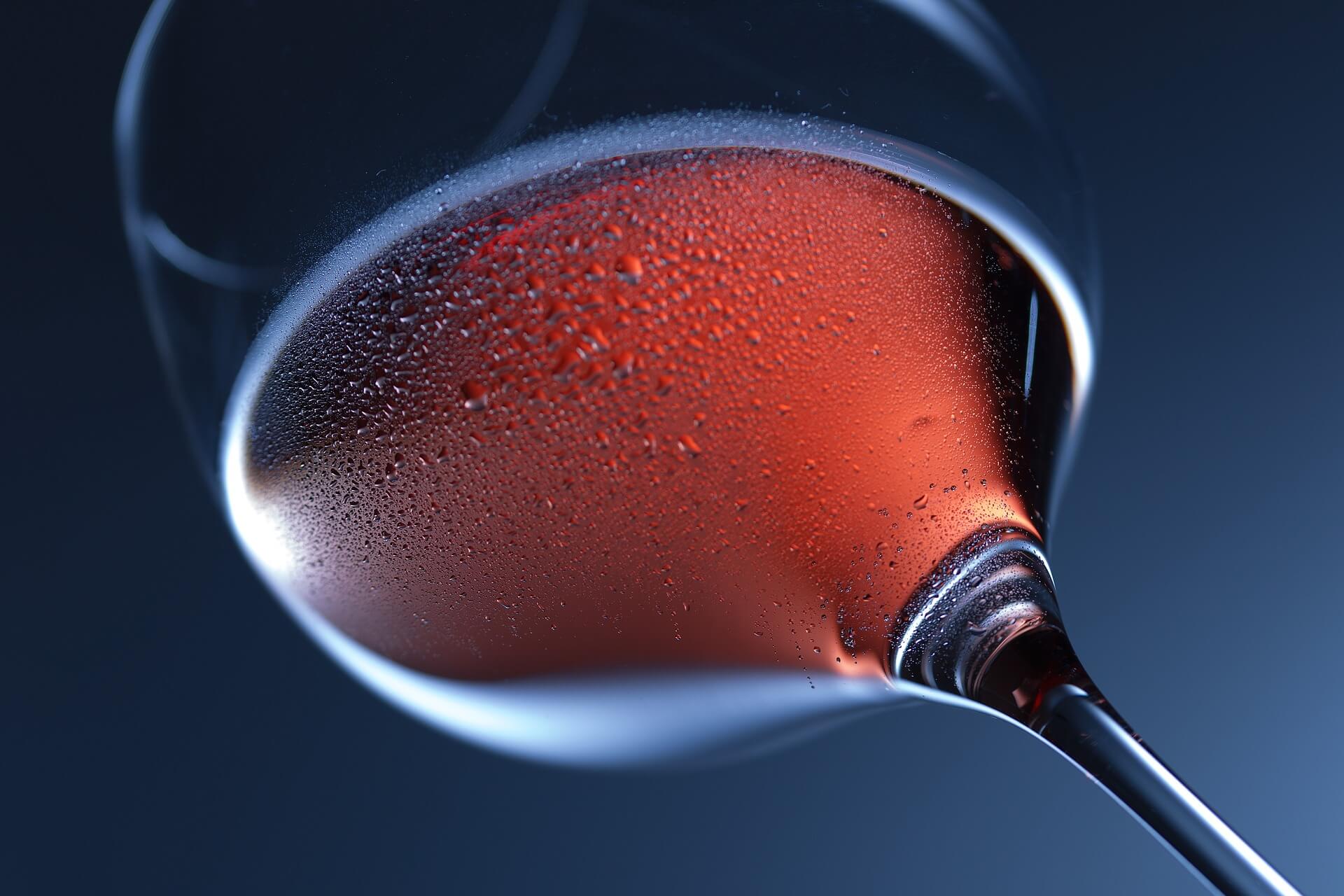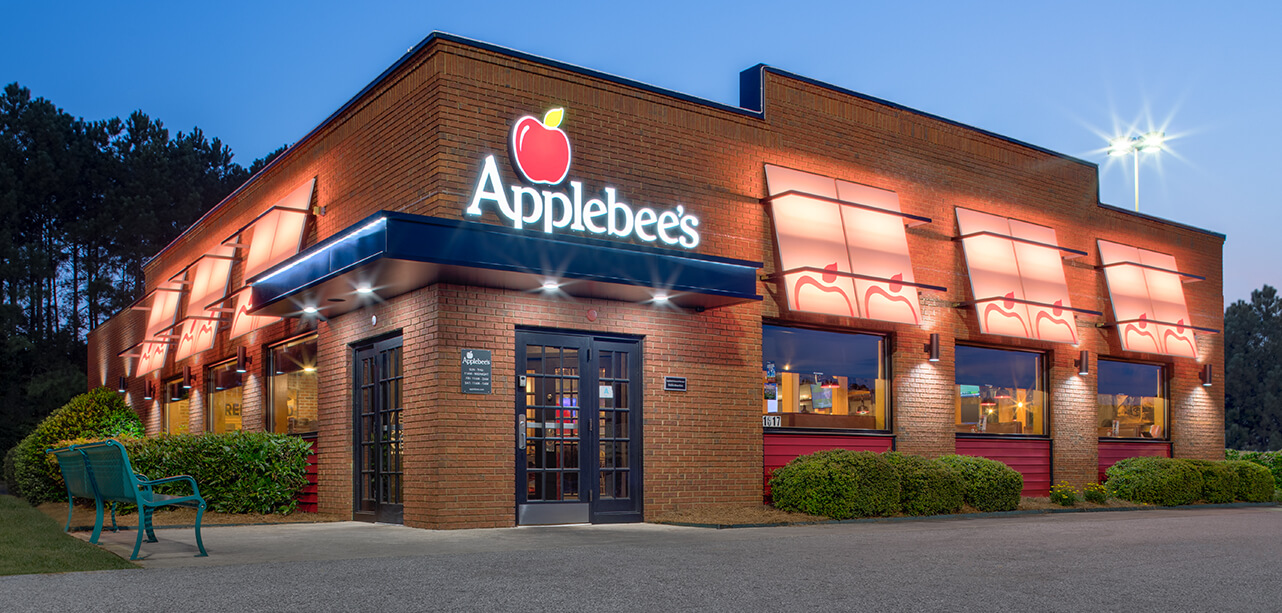Want Champagne Onion Rings with That $6,000 Burger?
by David Klemt

Matthew McConaughey once said that the inventor of the hamburger was smart but creator of the cheeseburger was a genius.
So, what title should we bestow upon the person who created the first-ever gourmet burger?
Super-genius? Superhuman? Superhero?
Perhaps legend is high-enough praise for whomever made it acceptable to charge more than $10 for a simple menu item.
A Brief History of Haute Hamburgers
The United States is widely credited with the invention of the hamburger. However, the exact origin is unknown. Therefore, it remains heavily disputed.
Of course, we wouldn’t have today’s gourmet burgers without two decidedly standard burger powerhouses: White Castle and McDonald’s.
The former was founded 100 years ago this past March in 1921, while the latter really came into its own in 1955. However, thanks to films like The Founder, McDonald’s tends to get the lion’s share of modern burger and fast-food credit.
Regardless, the first haute cuisine burgers wouldn’t hit the market until the turn of this century. Chefs Daniel Boulud and Richard Blais are among the names that receive credit for creating the gourmet burger category.
Over the past several years, several high-dollar burgers have made headlines. For example, Corvallis, Oregon-located restaurant Juicys Outlaw Grill created a $5,000 burger ten years ago. Anyone interested in having one was required to provide 48-hours’ notice.
In 2017, Dutch chef Chef Diego Buik offered a $2,300-plus burger at South of Houston in the Hague. Just two years ago, Chef Hubert Keller featured a $5,000 burger on the menu at his Las Vegas restaurant Fleur.
Another Las Vegas restaurant, Burger Brasserie, has offered a $777 burger for nearly a decade.
Chef Gordon Ramsay’s latest restaurant, the cleverly named Gordon Ramsay Burger outpost in London (the original is in Las Vegas), features a burger that costs between $106 and $144. Oh, and it doesn’t come with fries—those come with an upcharge of ten bucks.
New King of Burgers
Now, there’s a new most-expensive burger making the scene. Interestingly, it’s not from an American restaurant.
De Daltons, a Dutch diner located about 40 minutes southeast of Amsterdam, is the home of a gourmet burger known as the Golden Boy.

Of course, this isn’t just any gourmet burger—at €5000, De Daltons is attempting to make it the gourmet burger.
So, what does one get for their nearly $6,000 investment in haute cuisine?
To start, there’s the burger. It’s made of ground A5 Wagyu brisket and chuck short rib. It’s topped with The Macallan- and Kopi Luwak coffee-infused barbecue sauce; truffled Cheddar cheese; Joselito vintage jamon (the best ham in the world); Dom Pérignon-battered onion rings; Beluga caviar; white truffle; Tiger tomato and cucumber that was pickled in matcha; smoked mayonnaise made saffron, chive and duck eggs; and king crab cooked in white wine.
Oh, and the burger is given a whiskey-smoked treatment before it’s served.
Speaking of service, what kind of bun is luxurious enough to hold the Golden Boy? A saffron- and Dom Pérignon-infused gold leaf one, of course.
Gourmet Gimmick?
The latest headline-grabbing burger is truly a hedonistic indulgence. Unlike some haute hamburgers from the past, however, it’s made with truly impressive ingredients.
Before the Golden Boy made its appearance, one simply had to make a BOUS (Burger of Unusual Size) to get attention. One could also go the “gourmet” route by pairing their signature burger with a pricey bottle of Champagne.
After those two routes turned a bit stale, chefs with impressive credentials could make news by making gourmet burgers from “fancy” meats, slapping foie gras and an aged cheese on top, and dusting the bun with gold.
De Daltons’ burger is clearly taking the gourmet burger in an ultra-luxe direction. All challengers to the King of Burger throne will have to follow suit.
Yes, the Golden Boy is a gimmick. Yes, it has helped De Daltons pull focus and grab the global restaurant spotlight. However, as ludicrous as many will find the price tag, the burger does deliver on luxe ingredients and pageantry.
So, am I suggesting that restaurateurs review their menus, local suppliers, and market to come up with their own headline-generating luxury menu item? Well, yeah.
If an operator’s kitchen team has the skills to execute on a specialty high-priced item while remaining authentic and without alienating loyal guests, go for it. If there’s only PR, marketing and revenue upside, creating one incredible “off-menu”item is worth the effort.
Again, this comes down to operators knowing their guests, their markets, and what they’re great at doing. The word “gimmick” doesn’t have to be a dirty word—it can be a positive if done correctly.
Image: De Daltons


